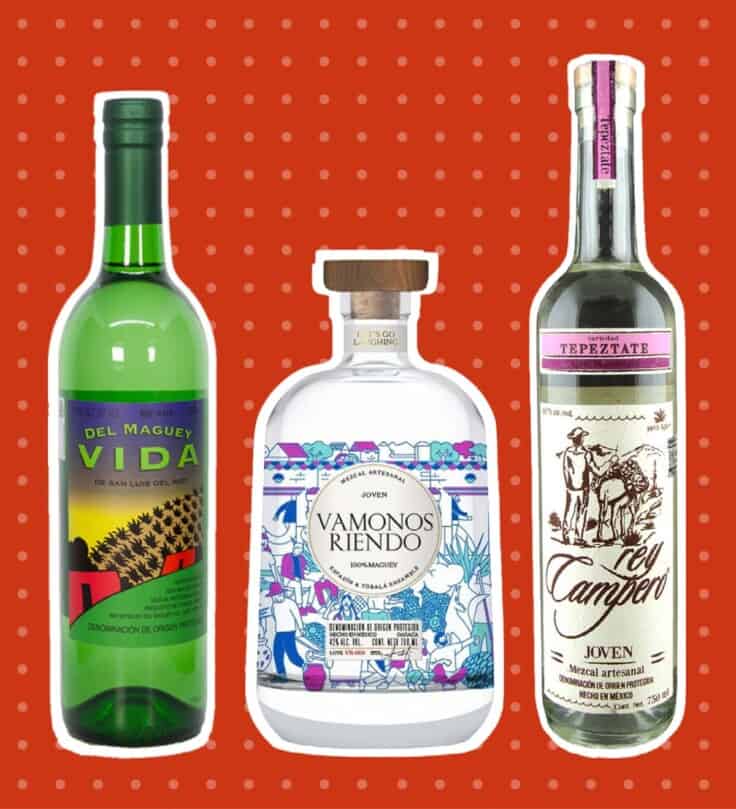Scanning the menu in your favorite swanky craft cocktail bar, you may have seen the term mezcal thrown into a couple of cocktails, even as far back as the mid-90s! With that in mind, the product you got then, that smokey and overwhelming flavor profile, is not your only mezcal option behind the bar anymore.
Mezcal is one of Mexico’s most traditional spirits; its history dates back centuries. Every sip of mezcal is a portal into the multi-year-long process of Mexican tradition and culture. But, we’re getting ahead of ourselves; let’s start from the beginning—what is mezcal?
What is Mezcal
Mezcal is a Nahuatl word, a language spoken by Mexican civilizations such as the Aztec, meaning “cooked agave.” Compared to other ingredients used to make spirits, such as wheat, grapes, sugarcane, etc.—agave takes the longest. The agave plant (aka maguey) takes a minimum of 4–5 years to mature, with some varieties taking up to a decade to reach maturity. The buildup of complex flavors and aromas over the growth period simply adds to mezcal’s complexity.
When you think of agave and alcohol, most of our minds naturally go to tequila. You might be surprised to learn that not all mezcal is tequila, but all tequila is considered a mezcal. To be honest, as a relatively new American consumer, I thought it was the opposite—that mezcal was a type of tequila, not the other way around!
Mezcal has more “wiggle room” than traditionally defined tequila and is allowed to be made from a broader range of agave varieties. In short, the agave plant, specifically the root-bulb called the piña, is harvested and cooked to turn its starches into sugars.
The piña is traditionally roasted in a pit, inside a clay pot, for several days—which is where that signature smoky flavor enters! (It essentially bakes in an oven underground.) The roasted bulb is allowed to rest for a few weeks, giving the agave juice inside the piña husk a chance to ferment. Once fermented, the juice is distilled to create the liquor know as mezcal.
Mezcal VS. Tequila
This part of the explanation was tricky, so we will do so how we best understood it while learning—by drawing comparisons!
As said above, all tequila is mezcal, but not all mezcal is tequila. You can think of mezcal as we do whiskey. All alcohol that is made from agave is mezcal—full stop. Mezcal is the umbrella over multiple varieties, just as whiskey is the umbrella for multiple varieties, such as bourbon, rye, and scotch. They’re different, but all are considered whiskey. Still with us?
Tequila can only be made from blue agave and can only be produced in 1 of 5 designated Mexican regions. As we said earlier, mezcal has more room to play. Mezcal can be produced in nine different Mexican states and can be made from dozens of different varieties of agave It’s all about the region and agave type. Tequila is just one variety of the agave-based spirit known as mezcal.
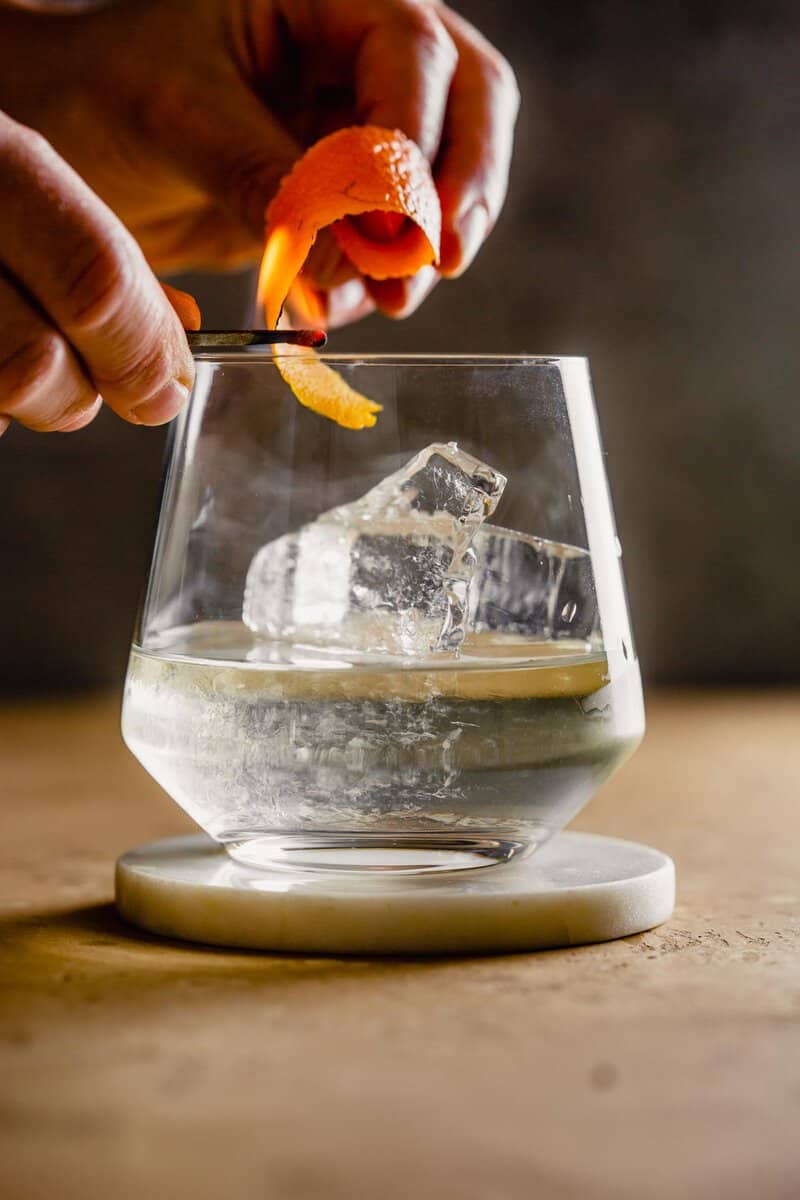
History of Mezcal
Mezcal is beyond traditional and historical. Dating back to roughly the year 250, Inca would use the juices of the maguey plant—a relative of the agave plant—to manufacture undistilled alcohol, called pulque.
Of course, we had to look pulque up; it’s described as being nearly as alcoholic as beer and labeled as ‘zingy,’ quite a few times, with a distinct milky color. It wasn’t until the Spanish came along during the 16th century and began distilling the agave liquids to make mezcal that the official spirit was born.
The Importance of Terroir to Mezcal
One of the most compelling parts of mezcal, due to its long heritage and tradition in Mexico, is called terroir. Let’s draw another comparison, this time to wine. Terroir is a french term that refers to the environmental conditions, soil, and climate that something is grown in – traditionally grapes, but this time with agave. Terroir is about authenticity, genuineness, and integrity; if you ask the experts, it matters in mezcal.
The desire to hold onto the identity of mezcal in a competitive world is imperative to its makers. Where the agave is grown and harvested matters, and where it is fermented and distilled matters.
Much like wine bottles, you’ll find unmatched detail on every bottle of mezcal. The agave varieties are listed, the year, and the state or region it was grown—they’re all listed. When have you ever seen where the corn was produced on a whiskey bottle?
When reaching for that bottle of mezcal on the shelf, remember that every ounce is a labor of integrity and authenticity.
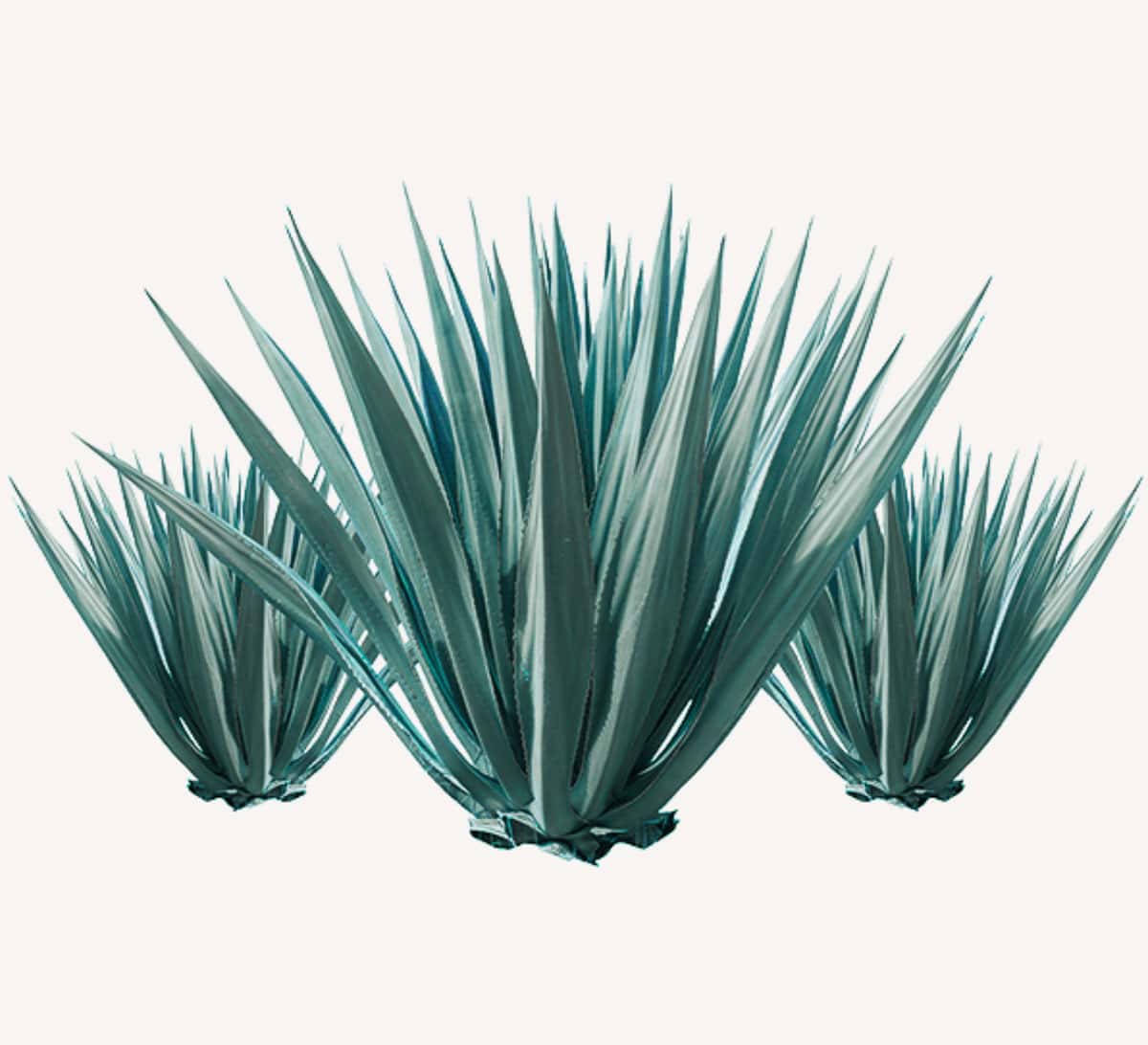
Popular Types of Agave Used to Make Mezcal
If the terroir of mezcal intrigues you, you’re probably curious where and which type of agave is grown. There are over 150 varieties of agave in Mexico, with Oaxaca responsible for 80% of agave growth. The categories below give you an insight into the basics of mezcal (the tip of the iceberg really). Here are some of the most common species of agave you’ll see, grown, fermented, and distilled in Mexico:
- Mexicano agave, grown in Oaxaca, produces a well-rounded, fruity, and smoky flavor. The mezcal produced is described as incredibly smooth and full-bodied.
- Cupreata is an agave variety grown in Guerrero and has notes of black pepper, roasted poblano, and ripe fruit. It’s robust and powerful.
- Espadin on the other hand is one of the most commercialized species of agave. It’s sweet and light, with notes of honey, sweet potato, and roasted agave.
Types of Mezcal
Categories and then category labels define mezcal. The three main categories are:
- Mezcal Ancestral: the agave is harvested and processed using strict, traditional production methods—including clay pots.
- Mezcal Artesanal: is primarily traditional but allows for the distillation in stainless steel or copper.
- Mezcal: with no defining label, allows for modern production in a more processed, time-efficient setting.
Then, there are the category labels. The most common you see is a young and unaged mezcal called Joven. It’s similar to a tequila Blanco, with a translucent color.
Reposado is the second label, which means the mezcal ages for less than a year, but more than two months, in a wooden barrel (often oak barrels). That’s where those nuanced oak vanilla flavors and beautiful caramel color come from in a reposado.
The third most common category is Añejo, which means it must age in a wooden barrel for more than one year. The flavor profile is deepened, and the color becomes darker and richer.
What type of mezcal should you get? Most bartenders will say that you should get the kind you like. The flavor profiles range from earthy, fruity, and peppery, with varying degrees of smokiness. Try a little of everything you see; a common expression amongst mezcal distillers is that “mezcal tastes like time.”
Worms in Mezcal?
You’ve probably heard it; you might have even seen it if you’re a well-versed mezcal drinker or world traveler—the tequila worm.
The story is that a moth larva, the worm in question that feeds on the agave plant, got into a batch of mezcal during production in the 1900s. The distiller liked the enhancement of flavor and awe of consumers that a worm brought forward. The legend goes on to say that if you eat the agave-pickled worm, it signifies bravery and produces drug-like hallucinations.
With that in mind… It’s mostly a myth, a good-for-marketing mezcal ploy. While I don’t have the authority to say if the mezcal worm will fulfill the hype or even exist, most consumers and distillers agree you will probably not find a worm in your agave spirit, and if you do, they don’t suggest eating it. It’s just a fun legend that emboldens the history and complexity that is mezcal.
How to Drink Mezcal
Again, drink by your preference. Craft cocktail experts say the best way to drink mezcal is by sipping on it neat; it allows you to experience all of those subtle flavors and aromas. Mezcal is also great in a cocktail, so cater to your flavor preference! Traditional flavor pairings include citruses, such as an orange slice, chili, and salt. New-aged recipes tend to add honey, juices, or herbs to complement the natural, earthy/smoky flavor of mezcal.
There’s no right or wrong, but now that you’re the most educated person you know about mezcal, it’s time to start exploring the menu.
Some of Our Favorite Mezcal
The Splurge: Rey Compero Tobala
Style: Joven | State: Oaxaca | Town: San Pedro Martir | ABV: 48%

We think this is the best mezcal you can get in the states. It has a soft sweetness and a lovely earthiness. Balance is the name of the game here! The ideal mezcal for sipping.
Best Value: Banhez Espadin & Barril
Style: Joven | Region: Oaxaca | Town: Ejutla | ABV: 42%
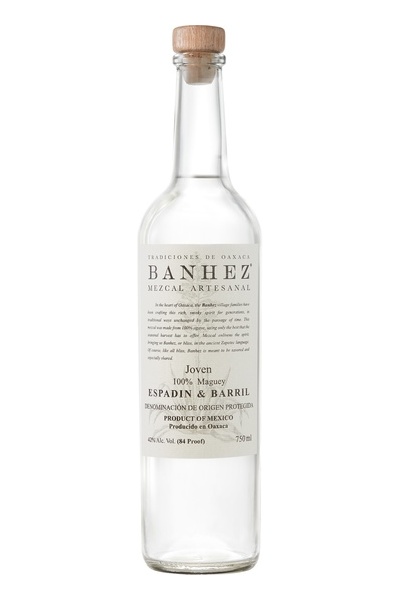
We love how much flavor this one packs. Lots of tropical notes—think banana and pineapple—paired with a healthy amount of smoke.
Best for Beginners: Montelobos Espadín
Style: Joven | State: Oaxaca | Town: Santiago Matatlan | ABV: 43%
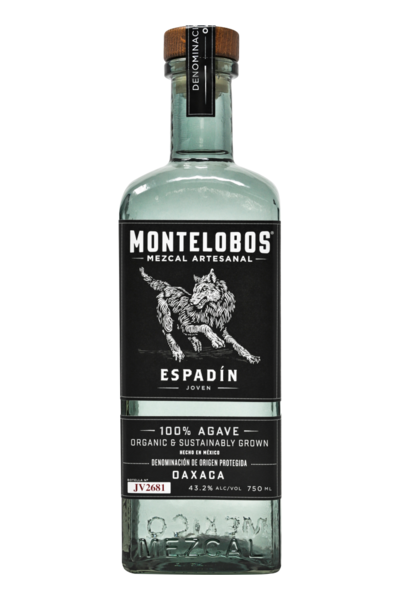
This one strikes the perfect balance for someone just getting into mezcal. Enough smoke to give them a taste without smoking them out. This one is also great for the tentative mezcal drinker.
Best for Sipping: Nuestra Soledad San Luis del Rio
Style: Joven | State: Oaxaca | Town: San Luis del Rio | ABV: 47%
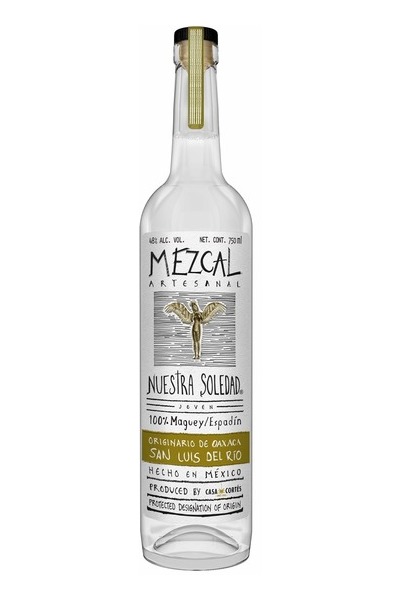
This mezcal is made with agave Espadín and it’s one where we think you can really taste the terroir and passion. It’s citrusy with mild melon notes and poblano pepperiness.
Best for Mixing: Ilegal Mezcal Joven
Style: Joven | State: Oaxaca | Town: Tlacolula | ABV: 40%
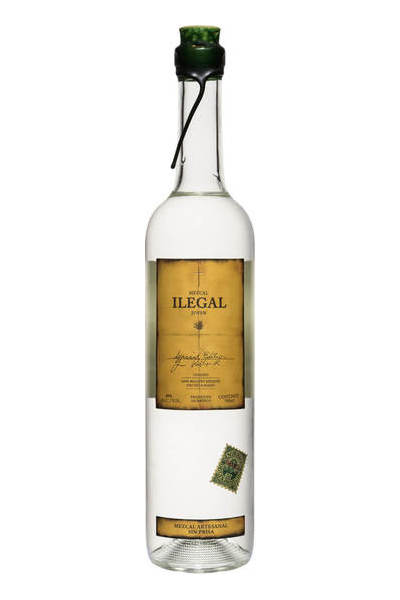
This unaged mezcal is light on the smoke and heavy on the citrus. Perfect for making a margarita. Newer years tend to be better. Go into this one knowing it’s good for mixing—nothing to write home about or sip on its own.
Best if you Like Smoky: Del Maguey Vida
Style: Joven | State: Oaxaca | Town: San Luis del Rio | ABV: 42%

When you want something that borders aggressive smokiness, choose this. It’s bold in smoke without going overboard. Del Maguey also makes a wonderful Tobalá mezcal.
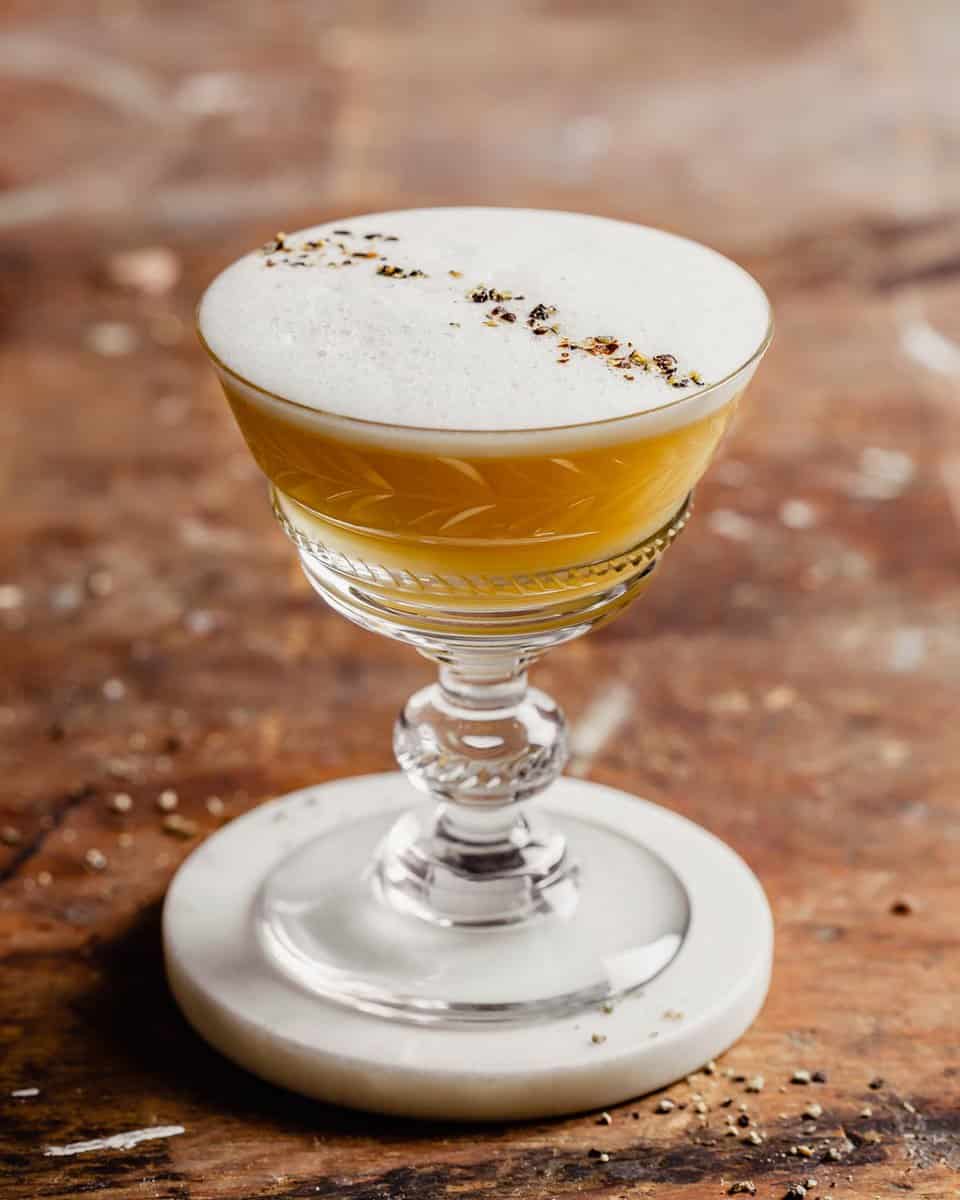
Mezcal Cocktails
Ready to dive into the world of Mezcal cocktails? Try some of our favorite smoky alcoholic beverages!
- Our Smoky Mezcal Whiskey Sour is such a fun cocktail for the holidays. Show stopping and delicious.
- If you love something boozy, try our Mezcal Old Fashioned. It’s not for the faint of heart, but it’s exquisite tasting.
- Or try our Smoky Margarita Popsicles! They make a fun boozy treat loaded with lime and orange juice.
- Make this Mezcal Negroni is you love big, bold and bitter flavors. (Mezcal is used in place of gin.)
- Don’t forget to try this Mezcal Margarita from Diffords! Such a classic. We also like to make a margarita with equal parts tequila reposado and mezcal—rich, smoky and full of flavor!
